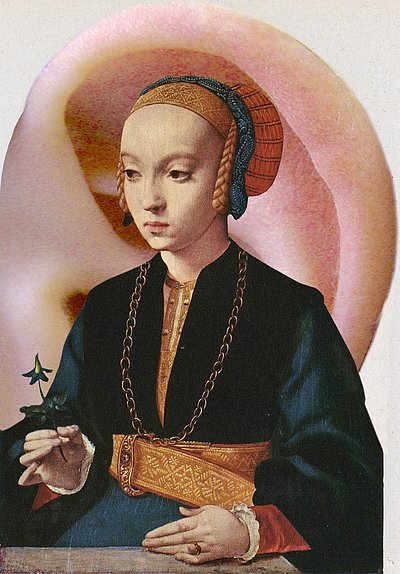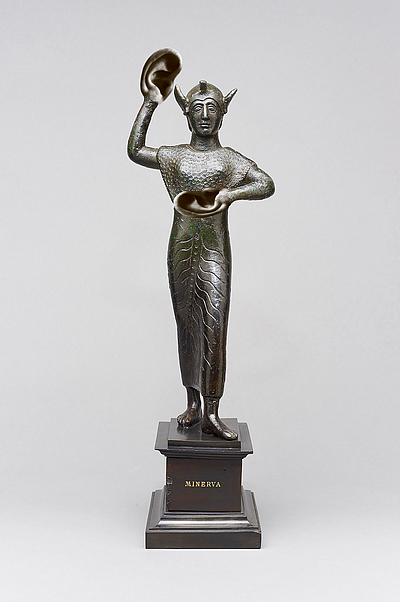Welcome at the Interface Culture program website.
Acting as creative artists and researchers, students learn how to advance the state of the art of current interface technologies and applications. Through interdisciplinary research and team work, they also develop new aspects of interface design including its cultural and social applications. The themes elaborated under the Master's programme in relation to interactive technologies include Interactive Environments, Interactive Art, Ubiquitous Computing, game design, VR and MR environments, Sound Art, Media Art, Web-Art, Software Art, HCI research and interaction design.

The Interface Culture program at the Linz University of Arts Department of Media was founded in 2004 by Christa Sommerer and Laurent Mignonneau. The program teaches students of human-machine interaction to develop innovative interfaces that harness new interface technologies at the confluence of art, research, application and design, and to investigate the cultural and social possibilities of implementing them.
The term "interface" is omnipresent nowadays. Basically, it describes an intersection or linkage between different computer systems that makes use of hardware components and software programs to enable the exchange and transmission of digital information via communications protocols.
However, an interface also describes the hook-up between human and machine, whereby the human qua user undertakes interaction as a means of operating and influencing the software and hardware components of a digital system. An interface thus enables human beings to communicate with digital technologies as well as to generate, receive and exchange data. Examples of interfaces in very widespread use are the mouse-keyboard interface and graphical user interfaces (i.e. desktop metaphors). In recent years, though, we have witnessed rapid developments in the direction of more intuitive and more seamless interface designs; the fields of research that have emerged include ubiquitous computing, intelligent environments, tangible user interfaces, auditory interfaces, VR-based and MR-based interaction, multi-modal interaction (camera-based interaction, voice-driven interaction, gesture-based interaction), robotic interfaces, natural interfaces and artistic and metaphoric interfaces.
Artists in the field of interactive art have been conducting research on human-machine interaction for a number of years now. By means of artistic, intuitive, conceptual, social and critical forms of interaction design, they have shown how digital processes can become essential elements of the artistic process.
Ars Electronica and in particular the Prix Ars Electronica's Interactive Art category launched in 1991 has had a powerful impact on this dialog and played an active role in promoting ongoing development in this field of research.
The Interface Cultures program is based upon this know-how. It is an artistic-scientific course of study to give budding media artists and media theoreticians solid training in creative and innovative interface design. Artistic design in these areas includes interactive art, netart, software art, robotic art, soundart, noiseart, games & storytelling and mobile art, as well as new hybrid fields like genetic art, bioart, spaceart and nanoart.
It is precisely this combination of technical know-how, interdisciplinary research and a creative artistic-scientific approach to a task that makes it possible to develop new, creative interfaces that engender progressive and innovative artistic-creative applications for media art, media design, media research and communication.
Themenwoche Akustische Ökologie 2025
10. bis 16. Juni 2025, jeweils 17.00 bis 18.00 Uhr Veranstaltungsorte lt. Programm
Das Co.Lab lädt zur Themenwoche Akustische Ökologie.
Das Co.Lab Akustische Ökologie ist im gesamten DACH-Raum ein einzigartiger universitärer Schwerpunkt. Um die Integration von Akustik in die Ökologie und ihre öffentliche Wahrnehmung zu forcieren, gibt es auch 2025 eine Themenwoche Akustische Ökologie. Von 10. bis 16. Juni finden täglich von 17.00 bis 18.00 Uhr Veranstaltungen statt, die zeigen: Schall ist ein integraler Bestandteil ökologischen Denkens, Analysierens und Gestaltens. Die Online-Plattform dafür ist soundinglinz.at.
Programm
Tag 01 - Dienstag, 10. Juni, 17.00 Uhr
Hyperakusis - Die Stadt von oben hören
Mit Didi Bruckmayr
Treffpunkt: Mariendom, Nordportal,
Baumbachstraße, 4020 Linz
Anmeldung wegen begrenzter Teilnehmer*innenzahl
bitte bei: Dietmar.BRUCKMAYR@kunstuni-linz.at
Tag 02 - Mittwoch, 11. Juni, 17.00 Uhr
Reflexionsreflexion - Brücken
Mit Peter Androsch
Treffpunkt: Kunstuniversität, Hof
Kollegiumgasse 2, 4020 Linz
(Spaziergang zu den drei Brücken)
Tag 03 - Donnerstag, 12. Juni, 17.00 Uhr
Geräuschmusik / Präpariertes Klavier
Lukasz Romero zeigt,
wie John Cage das Klavier präparierte
Zeitbasiertes Wohnzimmer
Kunstuniversität, Domgasse 1, 4. Stock
Tag 04 - Freitag, 13. Juni, 17.00 Uhr
Schall ist Luft: Orgelkonzert
Mit Peter Androsch
Treffpunkt: Pfarrkirche St. Severin
Lederergasse 50, 4020 Linz
Tag 05 - Samstag, 14. Juni, 17.00 Uhr
Bewusstseinsstrom
Poesie – Die erste akustische Kunst
Mit Mathilde Baldassari, Florian Winkler,
Peter Androsch, Didi Bruckmayr uvm.
Zeitbasiertes Wohnzimmer
Kunstuniversität, Domgasse 1, 4. Stock
Tag 06 - Sonntag, 15. Juni, 17.00 Uhr
Die Stimmen der Vergangenheit - Hörspaziergang
Mit Peter Androsch
Treffpunkt: Kunstuniversität, Hof
Kollegiumgasse 2, 4020 Linz
(hauptsächlich in Deutsch)
Tag 07 - Montag, 16. Juni, 17.00 Uhr
Hyperakusis - Die Stadt von oben hören*
Mit Didi Bruckmayr
Treffpunkt: Mariendom, Nordportal,
Baumbachstraße, 4020 Linz
Anmeldung wegen begrenzter Teilnehmer*innenzahl
bitte bei: Dietmar.BRUCKMAYR@kunstuni-linz.at

